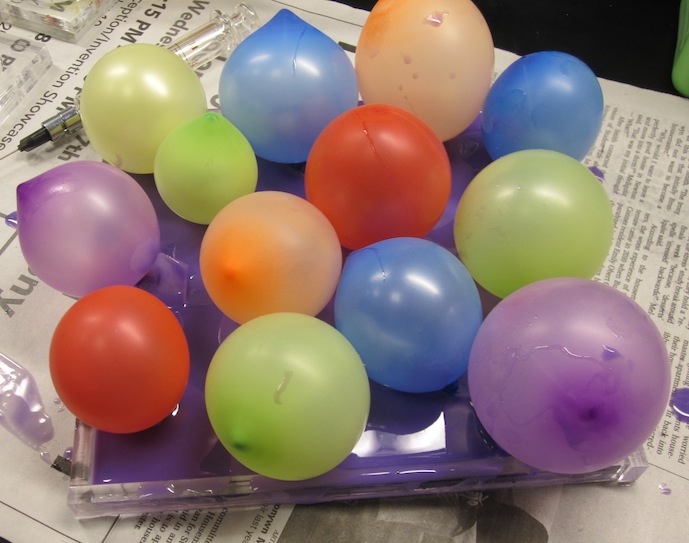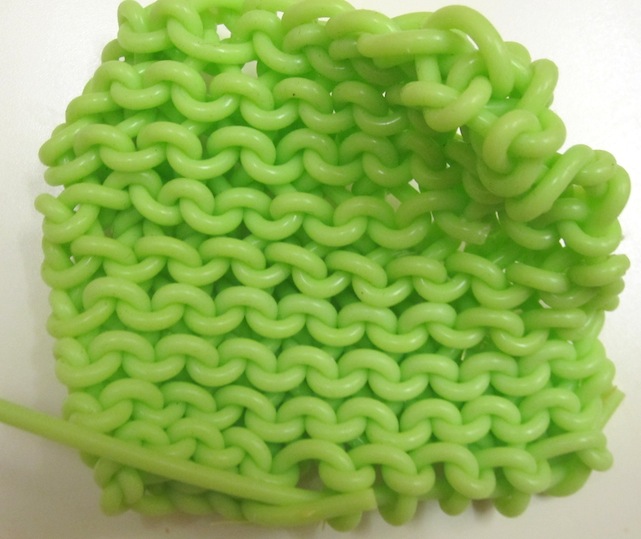Composite Variations
by anjalimuralidhar
This week I made three composite textiles using a duplication polymer that is mostly used in dentistry. I also use this polymer to make many of the samples I use in my research, so I thought it would be fun to use it in new and experimental ways.
I made a composite with acrylic yarn and purple duplication polymer. First, I crocheted a fishnet pattern out of purple yarn.
Then, I mixed the polymer components 1:1 in two parts and poured it over the net in an acrylic tray. I wanted the yarn to get soaked with the polymer to see what kind of texture would result if the polymer got in between the yarn fibers.
The resulting textile has an interesting combination of smoothness from the polymer and roughness from the yarn texture.
In this next textile, I wanted to experiment with a composite that combines two-dimensionality and three-dimensionality, with balloons and duplication polymer. I inflated several latex water balloons and taped them to the bottom of an acrylic tray.
I then mixed and poured the duplication polymer into the tray. The polymer, when set, holds the balloon bases in place.
The resulting textile is a 2D sheet of polymer with 3D balloons protruding from the surface.
Unfortunately, the balloons slowly deflate after a few days. So, I suppose one could say this textile also has a temporal component.
My third textile probably doesn’t really go with this assignment, since it’s technically a woven material, yet it is made out of a non-woven “yarn” that is cast with duplication polymer. This isn’t strictly a composite by the traditional definition, but I would say it is a composite of techniques since it combines a non-woven fabrication process to make the yarn with a traditional weaving (or knitting) technique. My labmate makes these green “spaghetti rods” for his model experiments on rod mechanics (most recently, the mechanics of curly hair!). I thought it would be interesting to knit these rods into a textile. I made “yarn” with the duplication polymer using a syringe and plastic tubing. I taped the tubing to a long piece of 80/20 to hold it in place and poured the duplication polymer into a syringe. The polymer is then extruded from the syringe into the plastic tubing.
Then, the plastic tubing is cut away after the polymer sets. This is what the “yarn” looks like:
Then I used knitting needles to knit a small sample. This material was particularly difficult to knit with since the “yarn” is quite rubbery and doesn’t like to slide along the knitting needles.
This is what the finished sample looks like:









